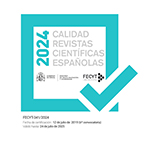Alternation between diphthongized and non-diphthongized forms in the paradigms of the verbs völë̀ (‘want’) and pödë̀ (‘can’) in 20th century texts in the Gallo-Italic dialect of Nicosia
Abstract
The alternation between diphthongized and non-diphthongized forms in Italo-Romance verbal paradigms reflects the development of ŏ and ĕ of the stem in stressed open syllables (diphthongized) vs. unstressed syllables (non-diphthongized) (Rohlfs 1968: § 538; Maiden 2004, 2018). However, in Nicosiano the alternation unexpectedly characterizes also rhizotonic forms of the present indicative of two specific verbs – völë̀ ‘want’ and pödë̀ ‘can’ – so that one and the same rhizotonic form occurs both diphthongized and non-diphthongized: vuoghjö/voghjö ‘want.1sg’, vuoë/voë 2sg, vuò/vò 3sg, vuonö/vonö 3pl; puozzö/pozzö‘can.1sg’, puoë/poë 2sg, può/pò 3sg and puonö/ponö 3pl. Undiphthongised forms occur when völë̀ and pödë̀ are followed by an infinitive verb; diphtongised forms occur elsewhere. The data may be explained by hypothesising a sequence of (morpho)phonological processes at play in distinct diachronic stages: a diphthongisation triggered by phonological phrase prominence (Nespor 1993: § 8.5; Kager / Zonneveld 1999) is at play only at an earlier stage; due to the new status acquired by ‘want’ and ‘can’ when subcategorising an infinitive clause, two distinct pairs of entries (with and without diphthongised roots) are then stored in the lexicon.
Downloads
Article download
License
In order to support the global exchange of knowledge, the journal Cuadernos de Filología Italiana is allowing unrestricted access to its content as from its publication in this electronic edition, and as such it is an open-access journal. The originals published in this journal are the property of the Complutense University of Madrid and any reproduction thereof in full or in part must cite the source. All content is distributed under a Creative Commons Attribution 4.0 use and distribution licence (CC BY 4.0). This circumstance must be expressly stated in these terms where necessary. You can view the summary and the complete legal text of the licence.










